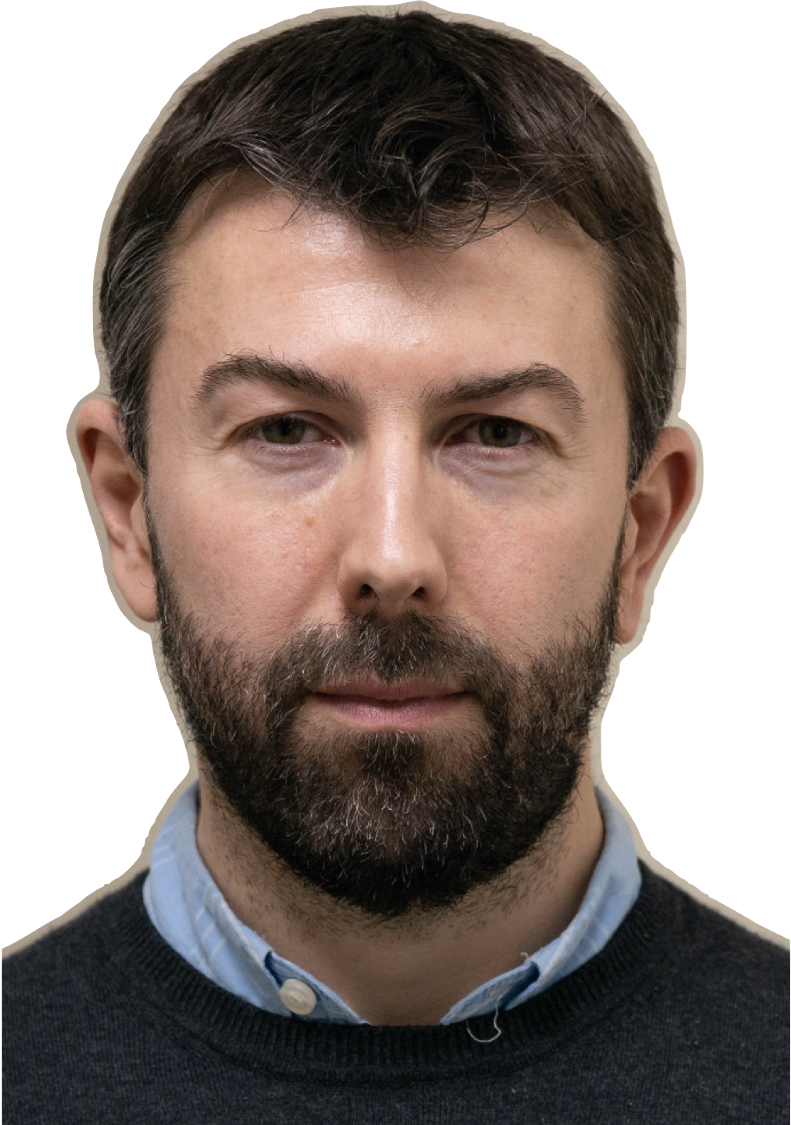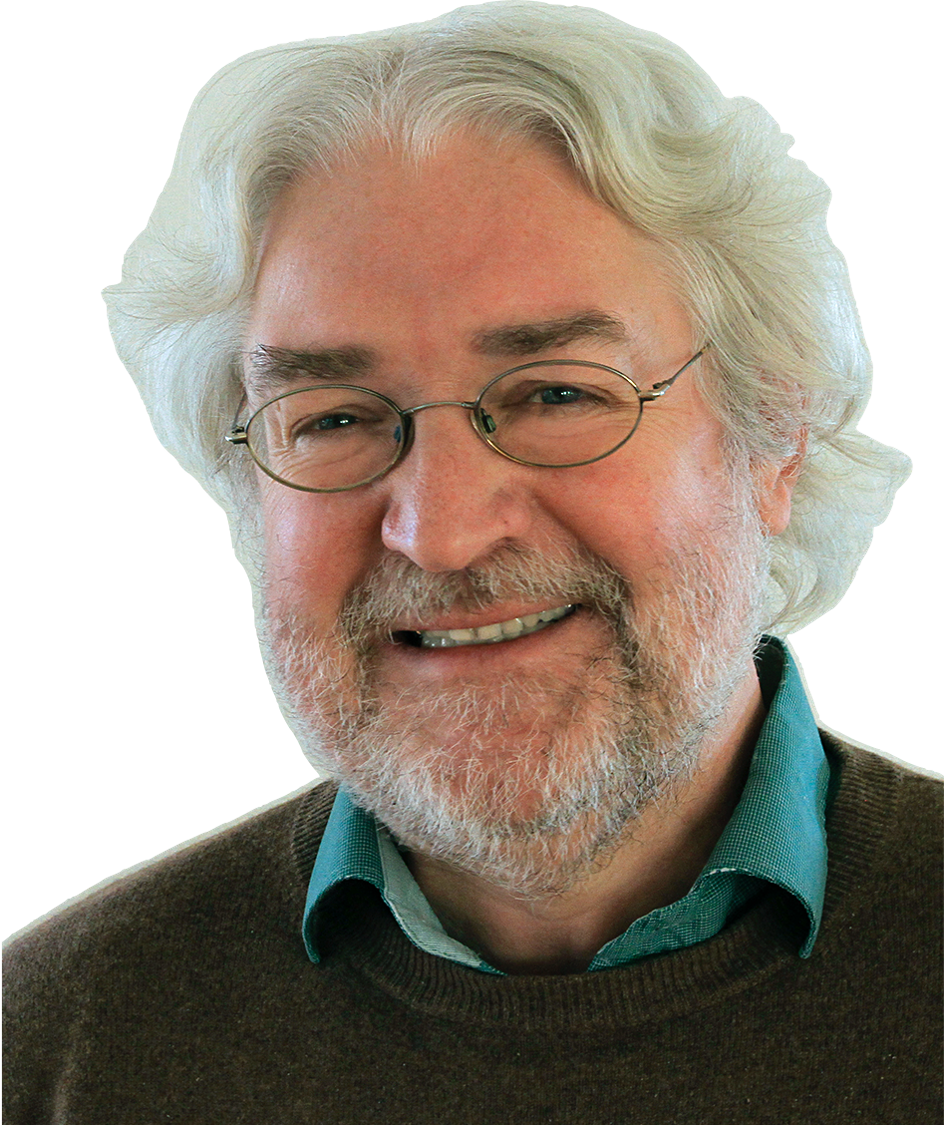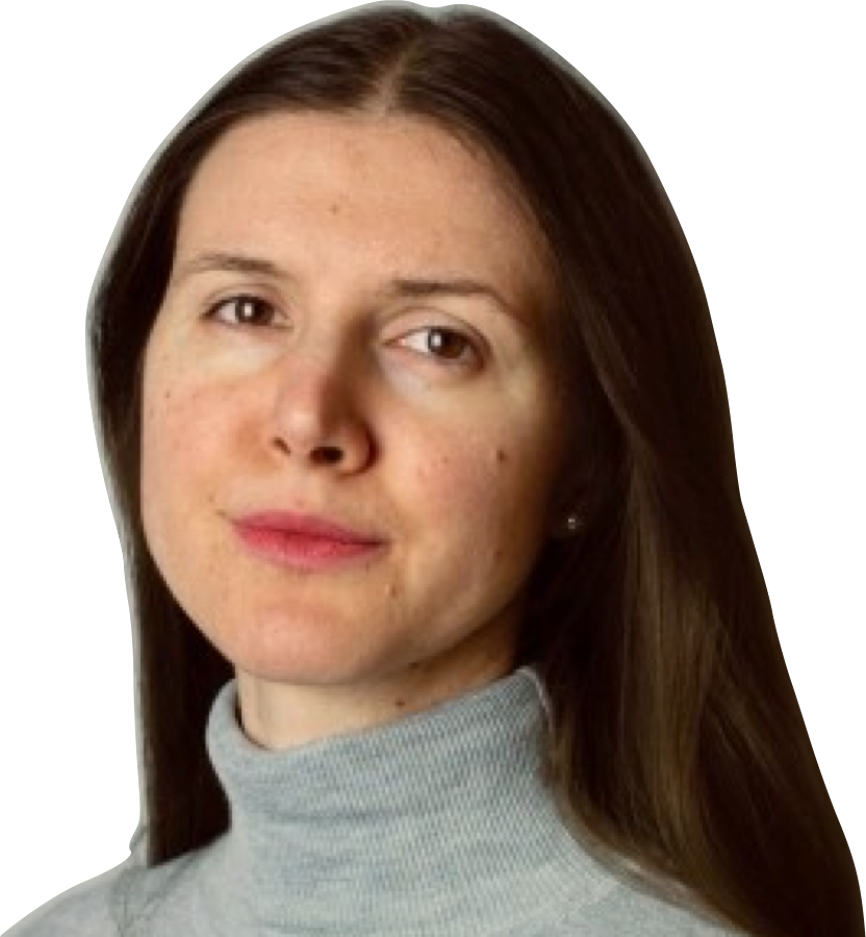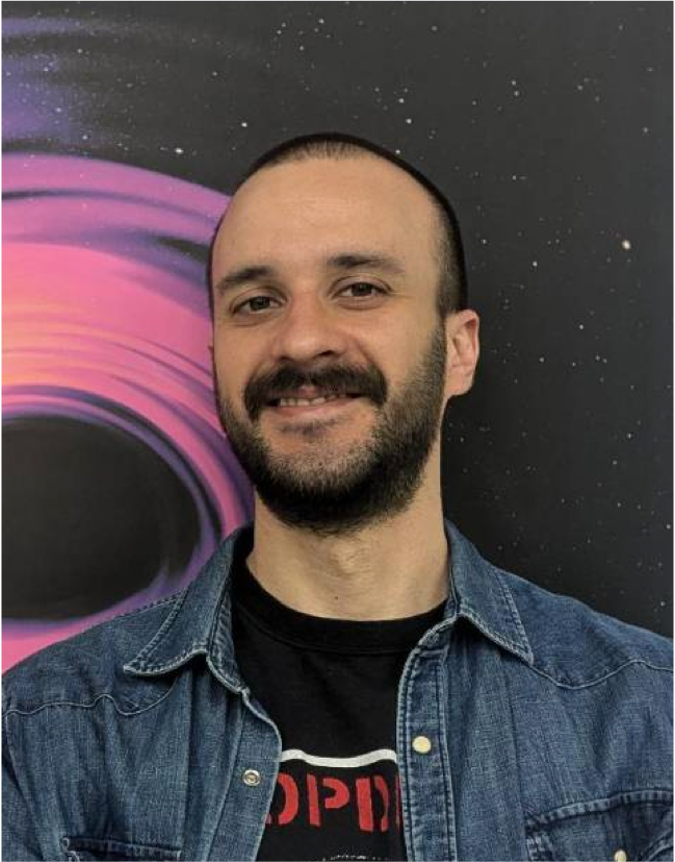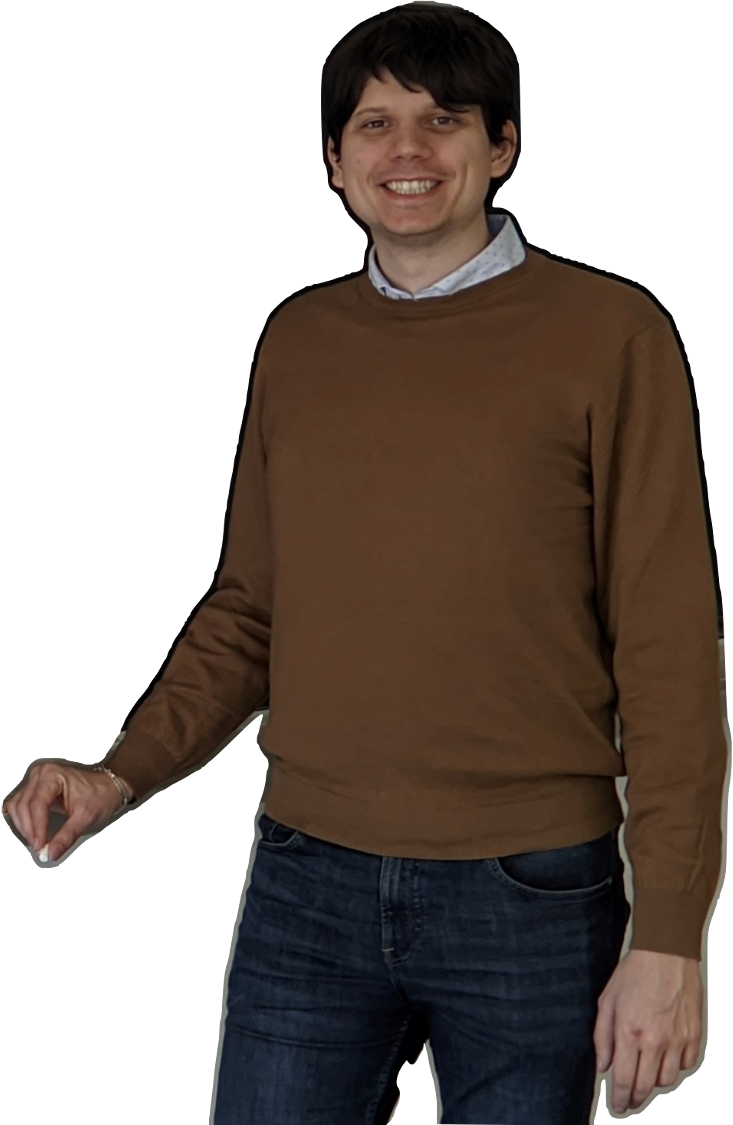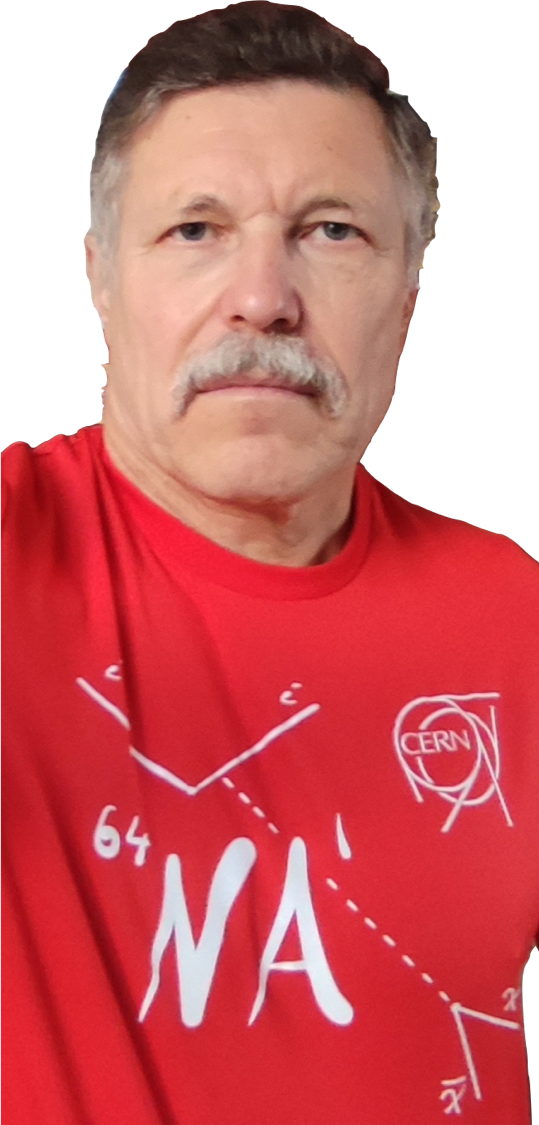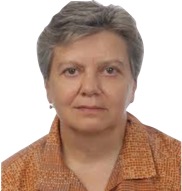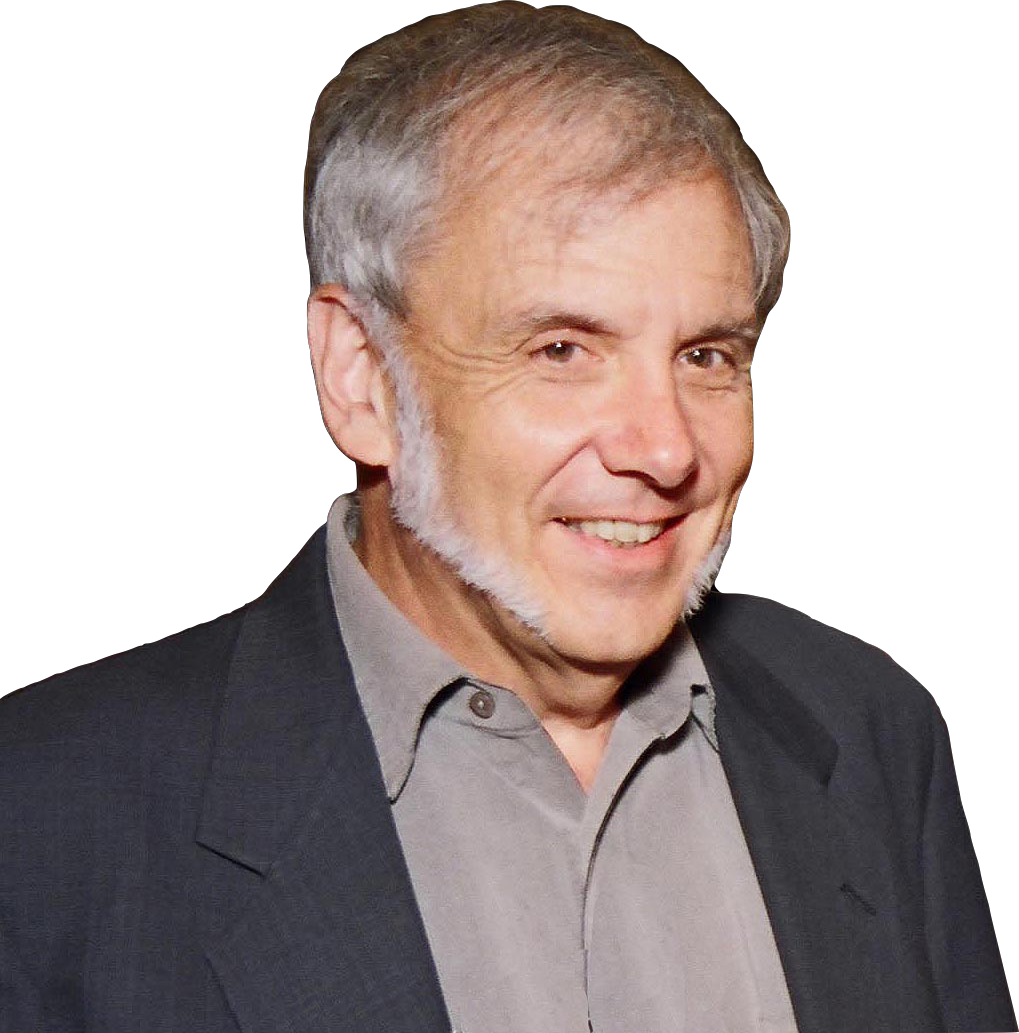I seminari di PER2A0P2S5

Venerdì 21 novembre 2025
Ore 15:00 - Aula C
Binary Neutron Stars:
from macroscopic collisions
to microphysics
Luciano Rezzolla
I will discuss the recent rapid progress made in modeling these systems and show how the gravitational signal can provide tight constraints on the equation of state, sound speed, and the occurrence of phase transitions. Finally, I will discuss a novel and tight correlation between the ratio of the energy and angular-momentum losses in the late-time portion of the post-merger signal, i.e., the "long ringdown", and the properties of the EOS at the highest pressures and densities in neutron-star cores.
Mercoledì 19 novembre 2025
Ore 15:30 - Aula de Tollis
Reconstructing the Universe from Type Ia Supernovae
Francesco Sorrenti
Cosmology is the study of the origin, components, evolution, and final fate of the Universe. In recent decades, there have been significant advances in both observational and theoretical aspects of our understanding of the Universe, leading to the formulation of the Standard Cosmological Model, also known as ΛCDM. The study of Type Ia Supernovae (SNe Ia) has been instrumental in the development of this model. In particular, the observation of high-redshift SNe Ia led to the discovery of the accelerated expansion of the Universe in 1998. Despite our advances in the field, many questions in cosmology are still open. This thesis shows that the future of supernova cosmology remains promising. In particular, we emphasize the importance of continuing to study the SNe Ia in order to reconstruct both the local and the primordial Universe.
Mercoledì 5 novembre 2025
Ore 15:00 - Aula A
The QCD Axion
A Fresh Theoretical Perspective
The Good, the Bad, and the Experimental
Federico Mescia
The established theory of strong interactions, Quantum Chromodynamics (QCD), lacks a convincing explanation for why it does not measurably violate charge-parity (CP) symmetry. An elegant solution to this conundrum, proposed by Roberto Peccei and Helen Quinn, predicts the existence of a new particle: the axion.
Although axions have been the subject of experimental searches since their theoretical introduction, recent years have witnessed a surge in global interest in this field. After reviewing the axion-based solution to the strong-CP problem and the current experimental progress in axion searches, I will delve into some recent advancements in axion model building —highlighting the good, the bad, and the ugly—that challenge conventional assumptions and significantly expand the viable parameter space for the QCD axion. These insights carry important implications for astrophysical constraints and the design of future detection strategies. In particular, I will discuss the new generation of axion searches scheduled at the National Laboratories of Frascati (LNF), such as the QUAX experiment, which employs haloscopes to detect axions through their coupling to photons or electrons, and the FLASH experiment, which aims to explore the mass range of cosmic axions using a superconducting magnet from the FINUDA experiment.
Mercoledì 8 ottobre 2025
Ore 15:00 - Aula A
Observation of the very rare Σ+→pμ+μ- decay
Gabriele Martelli
The Σ+→pμ+μ- decay is observed for the first time at the LHCb experiment. This is a flavour changing neutral current sensitive to physics beyond the Standard Model, which could modify its properties. In particular the HyperCP experiment years ago presented an evidence of this decay with a hint of a possible unknown intermediate particle. This new measurement presents a highly significant observation and a measurement of its integrated branching fraction and dimuon invariant mass distribution. This is the rarest baryon decay ever observed.
Martedì 2 settembre 2025
Ore 15:00 - Aula A
Quarkonium production: where do we stand?
Jean-Philippe Lansberg
I will review the current status of our understanding of quarkonium production after nearly 15 years of LHC data. I will discuss prospects for the US EIC and argue that more precise photoproduction data will be complementary to that from the LHC. I will then propose a solution to the so-called ψ(2S) surplus at large pT, first discovered at the Tevatron, then confirmed at the LHC. This solutions bears upon the complete consideration of relativistic corrections.
Mercoledì 28 maggio 2025
Ore 14:30 - Aula A
Analisi critica della performance nell'Intelligenza Artificiale:
un'introduzione
Marco Zullich
I moderni sistemi di Intelligenza Artificiale (AI) hanno alla base un processo di addestramento in cui un modello viene istruito a minimizzare gli errori commessi su un set finito di dati. La scelta delle metriche di valutazione riveste pertanto un ruolo cruciale nel conseguimento di un modello dalle prestazioni ottimali.
Tuttavia, le principali metriche utilizzate nell'addestramento e nella valutazione possono omettere aspetti significativi di un modello, da tenere particolarmente in considerazione in contesti critici, come la produzione di previsioni che possono impattare la vita umana.
Ad esempio, modelli ben performanti, secondo le metriche classiche, possono nascondere distorsioni algoritmiche a sfondo etnico, oppure possono generare risposte estremamente confidenti in presenza di dati inusuali o completamente casuali.
In questo seminario, mi propongo di effettuare una breve introduzione interattiva alla questione della valutazione della performance di modelli di AI, ponendo successivamente l'attenzione su altre dimensioni socialmente rilevanti, spesso trascurate, in una prospettiva incentrata prevalentemente al tema della "performance" quantitativa. L'obiettivo finale del seminario è di fornire al pubblico una prospettiva sulle limitazioni dell'AI moderna, contribuendo ad una demistificazione della narrazione, promossa da alcuni settori, che vorrebbe un'adozione ubiquitaria ed acritica di questi modelli su scala globale.
Giovedì 8 maggio 2025
Ore 15:00 - Aula A
Quantum computing the Schwinger model:
1st order phase transitions and open quantum system
Karl Jansen
We will introduce the 1+1-dimensional Schwinger model on the lattice in the Hamiltonian formulation. The model is analyzed both with tensor network (TN) and also quantum computing (QC) techniques. In particular we will focus on the continuum limit employing two different fermion formulations within the TN approach. By adding a topological term, the CP violating first order phase transition can be studied using QC when the theta-parameter, which multiplies the topological term, is varied. To this end, real quantum computer hardware is employed. In the talk we will also investigate the Schwinger model as an open quantum system. Finally the center of quantum technology and applications is introduced and its main activities described.
Giovedì 8 maggio 2025
Ore 15:30 - Aula A
Analysis of the confinement string in (2+1)-dimensional Quantum Electrodynamics with quantum computing
Arianna Crippa
In this presentation I will focus on a (2+1)-dimensional lattice discretization of Quantum Electrodynamics with the inclusion of dynamical fermionic matter. By defining a suitable quantum algorithm to measure the static potential as a function of the distance between two static charges on the lattice, we use a variational quantum calculation to explore the Coulomb, confinement and string breaking regimes. A symmetry-preserving and resource-efficient variational quantum circuit is employed to prepare the ground state of the theory at various values of the coupling constant, corresponding to different physical distances. This allows the accurate extraction of the static potential from a quantum computer. We demonstrate that results from quantum experiments on the Quantinuum H1-1 trapped-ion device and emulator, with full connectivity between qubits, agree with classical noiseless simulations using circuits with 10 and 24 qubits. We also test the performance of an IBM superconducting device in a direct calculation of the relevant state probabilities. Moreover, we visualize the electric field flux configurations that mostly contribute in the wave-function of the quantum ground state in the different regimes of the potential, thus giving insights into the mechanisms of confinement and string breaking.
Mercoledì 30 aprile 2025
Ore 15:00 - Aula A
Energy extracted from Black Holes via magnetic reconnection
Filippo Camilloni
Magnetic reconnection is a ubiquitous astrophysical phenomenon, with several astronomical observations and numerical simulations increasingly providing evidence of interesting dynamic effects around black holes. In this talk, I discuss how magnetic reconnection can extract rotational energy from a spinning black hole via a Penrose process mediated by plasmoids that are produced at reconnection sites. Our approach is meant to determine the physical conditions that make a plasmoid-driven Penrose process energetically viable and does not rely on ad-hoc prescriptions for the kinematics of the plasma around an astrophysical black hole. I will present a concrete example by considering a magnetized accretion disc, whose portion penetrating the ergosphere, which we dub "ergobelt", naturally provides a site to self-consistently compute the occurrence of reconnection and to estimate the energetics of a plasmoid-driven Penrose process.
Mercoledì 23 aprile 2025
Ore 15:00 - Aula A
Introduction to nuclear fusion
Fabio Cismondi
In the current considerations about possible energy scenarios to sustain the increasing energy demand and the challenges imposed by the climate change, nuclear fusion is gaining more and more space and credibility as potential key player in future energy mix. Studied since the 50s thanks to breakthroughs discoveries by Russian scientists, nuclear fusion has long been seen as potential unlimited, clean and intrinsically safe source of energy, while the enormous technological challenges to make it real have constantly delayed its actual deployment. As of today, the most advanced and promising nuclear fusion concept is the tokamak: the ITER project under construction is south of France as international effort and supposed to get humankind one step closer to a commercial fusion power plant, is based on the tokamak concept. In this seminar nuclear fusion principle will be briefly introduced and compared to nuclear fission (used in the conventional nuclear power plants), and an overview of tokamak based machines, their construction principles and their challenges will be given. Deployment of nuclear fusion needs a number of parallel side activities and large projects, in particular for the qualification and licensing of the structural material to be used at the core of the fusion reactor, which is exposed to nuclear flux conditions different to the ones of nuclear fission materials. A complementary outlook will be provided in this seminar to the linear accelerators used as neutron sources for the qualification and licensing of nuclear fusion structural and functional materials.
Lunedì 14 aprile 2025
Ore 15:30 - Aula A
Among the rarest:
theoretical insights into four top-quark production at the LHC
Michele Lupattelli
The production of four top quarks is one of the rarest processes in the Standard Model, and it was finally observed in 2023 at the LHC. Studying this process offers valuable insights into the top-Higgs interaction and may reveal new physics. Thus, comparing theoretical predictions with current and future measurements is a crucial test for the Standard Model.
In this talk, I will provide an overview of
Mercoledì 9 aprile 2025
Ore 15:00 - Aula A
A constellation of ASTRI to study the Universe
Simone Iovenitti
ASTRI is an Italian project dedicated to the study of very high-energy astrophysical phenomena up to 100 TeV and beyond. Following the success of the first prototype instrument, ASTRI-Horn, located in Italy, the project has now entered the realization phase of the Mini Array: a system of nine identical Cherenkov telescopes operating in stereoscopic mode in Tenerife, Canary Islands. Moreover, the ASTRI design has also been adopted for the Small Size Telescopes (SSTs) of the Cherenkov Telescope Array Observatory (CTAO) in Chile, where more than 50 telescopes will be installed.
The ASTRI instruments feature a unique design. They implement a dual-mirror Schwarzschild-Couder optical configuration (never adopted before in gamma-ray astronomy) and use a custom Cherenkov camera based on miniaturized SiPM sensors instead of traditional large photomultiplier tubes. While these technological advancements provide ASTRI with unprecedented scientific opportunities, they also introduce significant calibration challenges. For instance, ASTRI telescopes are almost blind to the steady flux of stars in their field of view, making pointing calibration particularly critical, as the compact structure of the telescopes prevents the installation of auxiliary monitoring cameras sharing the same optical system. For the same reason, the alignment and focusing of the 18 segments of the primary mirror represent another challenge, requiring specialized strategies and procedures.
During this seminar, we will explore the operating principles of Imaging Atmospheric Cherenkov Telescopes (IACTs). We will then discuss the scientific goals and perspectives of the ASTRI project, examining both its strengths and critical aspects. Finally, we will present the current status of the array… directly from Tenerife!
Mercoledì 19 marzo 2025
Ore 15:30 - Aula A
Probing Fundamental Physics through Asymmetric Binary Mergers
Andrea Maselli
Black hole binaries with large mass asymmetries, such as Extreme Mass Ratio Inspirals, represent a new class of gravitational wave sources for next-generation detectors—largely undetectable by current interferometers. In the most extreme cases, these asymmetric binaries can remain within the detector band for hundreds of thousands of orbits before the final plunge. Moreover, while currently observed sources exhibit relatively simple behavior—quasi-circular orbits, mild eccentricities, and mostly aligned spins—highly asymmetric binaries are expected to follow much more complex trajectories, featuring significant eccentricity, off-equatorial motion, and orbital resonances. The combination of an exceptionally large number of orbital cycles and rich relativistic dynamics makes asymmetric binaries a unique laboratory for testing fundamental physics.
In this talk, I will review some of the exciting possibilities offered by asymmetric binaries, focusing on their potential to provide novel insights into the environments in which binaries evolve and the existence of new fundamental fields in the Universe coupled to gravity. I will examine the methodologies used to model such systems within non-vacuum spacetimes and beyond General Relativity, highlighting recent progress in waveform modeling. Finally, I will discuss the constraints that next-generation observations are expected to place on these models.
Giovedì 27 febbraio 2025
Ore 15:00 - Aula A
Anomalous magnetic moment of the muon and related low-energy projects
Olga Shekhovtsova
The anomalous magnetic moment of the muon (AMM) is an important precision parameter for testing the Standard Model of particle physics. It was first measured at CERN in 1959 and since that time many physicists have been involved in its theoretical evaluation as well in experimental collaborations intended to measure it. The main source of uncertainty in the theoretical calculations is the contribution of the so-called hadronic vacuum polarization (HVP). Traditionally, this contribution is determined using experimental data for electron-positron annihilation into hadrons– the so called "data-driven" method. The current status of the theoretical calculations of the AMM and the impact of low-energy processes on its theoretical value are discussed during the talk. Also, the Monte Carlo tools that are an important component in the “data-driven” method are illustrated in the presentation.
Giovedì 6 febbraio 2025
Ore 15:00 - Aula A
Extragalactic jets as a direct test to the ΛCDM model
Cristiana Spingola
Current small-scale cosmological controversies are coming down to the precision level of observations. The key point is whether a better understanding of baryonic physics, dark matter physics, or both is required to address these challenges. In this talk, I will describe how very long baseline interferometric observations of extended gravitationally lensed jets are contributing to understanding some of these small-scale cosmological issues, in particular the nature of dark matter.
Mercoledì 22 gennaio 2025
Ore 15:00 - Aula A
Quantum convolutional Neural Networks for jet images classification
Hala Siddig Mahamed Elhag
Quantum computing's potential to outperform classical methods has triggered growing interest, particularly in quantum machine learning (QML). In this talk, we explore the application of QML in high-energy physics (HEP), focusing on top-quark tagging—a task where classical convolutional neural networks (CNNs) excel but struggle with highly energetic jet images. Given this task, we use quantum convolutional neural networks (QCNNs) with a noiseless simulator and compare their performance to classical CNNs. Through varying encoding types—used to translate the classical data into quantum states—, loss functions, and convolutional quantum circuits, we demonstrate how QCNNs, especially those optimized via dimensional expressivity analysis (DEA), can outperform classical models with fewer parameters. These findings highlight the potential of QML in advancing HEP analysis.
Mercoledì 18 dicembre 2024
Ore 15:00 - Aula A
Come la fittizia materia oscura sia solo un effetto del campo elettrico galattico
Antonio Codino
La nozione di materia oscura trae origine dalla violazione del Teorema del Viriale negli ammassi di galassie e nelle galassie a spirale ed ellittiche. In buona sostanza, l’energia cinetica che anima le galassie negli ammassi, e stelle e nubi nelle galassie, è ben superiore a quella desunta da osservazioni sulla quantità di materia che genera i rispettivi campi gravitazionali. Recentemente (2021), per risolvere il problema dell’accelerazione dei raggi cosmici di energie altissime e altri problemi notevoli, si è postulato un campo elettrico permanente nelle galassie e negli ammassi. Questo campo elettrico è all’origine di fenomeni cosmici universali discussi altrove. Nel seminario si argomenta che il campo elettrico nelle galassie a spirale esercita una forza attrattiva su stelle e nubi galattiche. Questa forza si aggiunge a quella gravitazionale fornendo ulteriore energia cinetica a stelle e nubi. In questo quadro s’intende che applicando il Teorema del Viriale con la sola forza gravitazionale non vi può essere accordo con i dati osservativi. Donde la violazione menzionata sopra e, storicamente da quasi un secolo, l’ipotesi ad hoc dell’esistenza di materia fittizia (chiamata materia oscura e mai osservata nonostante i numerosi esperimenti ad essa dedicati). Secondo una vasta letteratura questa materia fittizia genererebbe la forza gravitazionale mancante. Vengono presentate le velocità di rotazione di stelle e nubi nelle galassie a spirale versus distanze radiali (le cosiddette curve di rotazione), con forza gravitazionale e forza elettrica sommate insieme, e confrontate con i numerosi dati osservativi disponibili da oltre mezzo secolo. Si accenna infine alla rilevanza dell’accordo.
Giovedì 12 dicembre 2024
Ore 15:00 - Aula C
Cosmological and Gravitational Wave Probes of Beyond the Standard Model Physics
Alessio Notari
Cosmology is providing new measurements that point to new physics. I will review several of them. The new measurements of the Baryon Acoustic Oscillations (BAO) by the DESI Collaboration, together with CMB and Supernovae data, and the direct local measurements of the Hubble rate H0 by the SH0ES Collaboration, point to new physics both in the Early Universe, in the form of Dark Radiation, and in the Dark Energy sector. I will also discuss, in this context, how to measure relic particles, focusing in particular on neutrino mass measurements and on the QCD Axion. Then, I will discuss other very interesting probes of the Early Universe: primordial Gravitational Waves and primordial Black Holes, focusing on the context of primordial Domain Walls in models with broken discrete symmetry and their signatures at Pulsar Timing Arrays, which are recently showing evidence for a gravitational wave background signal.
Lunedì 9 dicembre 2024
Ore 15:00 - Aula C
Laser Interferometer Space Antenna
Alberto Sesana
The Laser Interferometer Space Antenna is a spaceborne gravitational wave (GW) observatory adopted by the European Space Agency last January and scheduled for Launch in 2035. Thanks to its Million km-scale arms, it will unveil the GW sky at milliHz frequencies, which are anticipated to be the richest in number and variety of GW sources, ranging from white dwarfs in our galactic neighborhood, all the to massive black hole binaries (MBHBs) at the epoch of the first galaxies, and possibly to stochastic signals from the Early Universe. I will describe the LISA mission and it's science case, set to answer fundamental questions in astrophysics, astronomy and fundamental physics.
Martedì 22 ottobre 2024
Ore 15:30 - Aula A
Intelligenza artificiale applicata alla diagnosi precoce e alla prognosi della malattia di Alzheimer
 Edoardo Guido Torrigiani,
Edoardo Guido Torrigiani,
 Giovanni Bellomo,
Giovanni Bellomo,
 Davide Cianca
Davide Cianca
Come può l'intelligenza artificiale rivoluzionare la gestione dell'Alzheimer? In questo seminario, esploreremo i risultati di una ricerca all'avanguardia che unisce neurologia, fisica e informatica per trasformare la diagnosi e prevedere la progressione di questa malattia. Utilizzando AI e un ricco database di oltre 1000 pazienti, sono stati sviluppati strumenti che permettendo interventi terapeutici più tempestivi e una pianificazione del supporto su misura. Attraverso tre interventi coinvolgenti, un medico specializzando in neurologia introdurrà il contesto clinico e sociale, un fisico svelerà il potere predittivo dei biomarcatori, e un informatico ci condurrà nel mondo dei modelli di AI, mostrando come questi possono rivoluzionare la diagnosi ed anticipare la progressione della malattia. Il tema dell'intelligenza artificiale è più attuale che mai: basti pensare al recente Premio Nobel per la Fisica, assegnato proprio per studi pionieristici in questo campo. Un'occasione unica per scoprire come la tecnologia può cambiare il futuro dell'assistenza sanitaria!
Giovedì 10 ottobre 2024
Ore 15:00 - Benedetto de Tollis
Observation of the K+→π+νν decay and measurement of its branching ratio
Francesco Brizioli
A new measurement of the K+→π+ ν ν
decay by the NA62 experiment at the CERN SPS is presented, using data collected in 2021 and 2022.
This new data-set was collected after modifications to the beamline and detectors and at a higher instantaneous beam intensity,
with respect to the previous 2016-2018 data taking.
Using the NA62 data-set from 2016-2022, a new measurement of
B(K+→π+ ν ν)
=(13.0+3.3-2.9)×10-11
is reported, and for the first time the K+→π+ ν ν
decay is observed with a significance exceeding 5σ.
Lunedì 23 settembre 2024
Ore 15:00 - Aula A
Multiwavelength numerical modelling of extragalactic relativistic jets with JetSeT: from the open-source/reproducible approach to the physical insight of the results
Andrea Tramacere
In the first part of this talk, I will present the current state of open-source radiative modelling tools for the multiwavelength emission from extragalactic relativistic jets, focusing in particular on the JetSeT frameworks, highlighting features and the limitations related to the implementation of the different physical processes, l discussing the implications in terms of reproducibility, interoperability, maintainability, and overlapping, outlining the advisable routes for the near future.
In the second part, I will focus on some results and related open questions regarding the understanding of the physics acting in the relativistic jets, in particular, the particle acceleration processes, the VHE spectral emission, the optical/X-ray polarization, and the phenomenology of expanding jets. I will also discuss the requirements, for the development of the current tools, to advance our current understanding.
Mercoledì 19 giugno 2024
Ore 15:00 - Aula A
(Buone) pratiche
di comunicazione
della scienza
Valentina Mariani
Le attività nelle scuole, i seminari e gli eventi pubblici in cui si parla di
scienza sono ormai una costante nella vita di un ricercatore.
Ma cosa vuol dire davvero fare comunicazione scientifica al grande pubblico?
Abbiamo gli strumenti per farla in maniera efficace?
Lunedì 27 maggio 2024
Ore 15:00 - Aula A
Sperimentazione di tecniche di analisi immagine e machine learning sui manoscritti digitalizzati della Biblioteca Apostolica Vaticana
Giuliano Giuffrida
La Biblioteca Apostolica Vaticana (BAV) preserva da secoli un patrimonio librario, archivistico e numismatico di inestimabile valore: 80000 manoscritti, 9000 incunaboli, 100000 unità di archivio, più di un milione e mezzo di volumi a stampa, monete e medaglie, stampe, disegni, fotografie. A questi tesori va ora aggiunto l’archivio delle immagini digitalizzate, in continua crescita e che oggi conta circa 9 milioni di immagini appartenenti a più di 27000 volumi. Il Coordinamento dei Servizi informatici della BAV ha avviato una serie di sperimentazioni mirate all’analisi automatica o semiautomatica dei manoscritti digitalizzati. In questo talk sarà illustrata una di queste sperimentazioni, che prevede l’utilizzo di tecniche di segmentazione combinate con una rete neurale convoluzionale allo scopo di identificare e classificare diverse tipologie di oggetti e figure zoomorfe nei manoscritti miniati.
Giovedì 11 aprile 2024
Ore 15:00 - Aula A
Trovare l'ago nel pagliaio
Applicazione delle reti neurali alla ricerca di tracce su rivelatori plastici esposti al CERN
Giuseppe Levi
Da molti anni i rivelatori NTD che sono composti da fogli di materiale plastico come il CR39 o il Macrofol, sono usati per rivelare particelle ionizzanti che danneggiano la struttura del polimero permettono la creazione di fori conici tramite un attacco chimico basico. In ambienti con bassa radiazione di fondo le tracce sono facilmente visibili con un normale microscopio ed è possibile vedere contemporaneamente i due coni ad entrambi i lati della lastra. L'esperimento MoEDAL al CERN usa fra gli altri anche circa 20 metri quadri di questo tipo di rivelatori per cercare particelle esotiche altamente ionizzanti. L'ambiente sperimentale, presso il punto di interazione 8 di LHC, è però estremamente radioattivo e l'analisi di queste lastre è estremamente difficile. In questo Talk parliamo di come sia stato possibile generare, con l'uso di una rete GAN, delle immagini sintetiche contenenti "Tracce" e fondo per allenare una rete neurale per identificazione di oggetti e permettere la scansione automatica del detector. Queste tecniche potrebbero trovare applicazione anche in altri esperimenti.
Mercoledì 13 dicembre 2023
Ore 15:00 - Aula A
How the observed receding motion of the nearby universe is caused by negative charges retained by galaxy clusters
Antonio Codino
A new idea explaining the expansion of the universe is presented and debated. The receding motion of nearby universe within 1026 meters has never been explained with well assessed Physics Laws. According to a recent, complete study anchored to many empirical data, any spiral galaxies retain permanent electrostatic fields due to the motion of cosmic rays. Spiral galaxies and other galaxy types as well, experience multiple and variegated interactions in galaxy clusters as attested by X-ray, radio and optical data, thereby loosing the halo of positively charged cosmic nuclei, leaving negative charges of some 1033-1034 Coulomb in cluster cores. Negative charges are also suggested by upper limits of diffuse gamma-ray fluxes in galaxy clusters. Along this line of arguments velocities of galaxy clusters from the Earth caused by electrostatic fields generated by cosmic rays are calculated. The chief result, obtained in several pertinent conditions related to the expansion of the nearby universe, is that cluster velocities increase as cluster distances from the Earth augment.
Martedì 14 novembre 2023
Ore 15:00 - Aula C
Recent results and plans of the NA64 experiment
at the CERN SPS
Mikhail Kirsanov
Thermal dark matter models with particle masses below the electroweak scale can provide an explanation for the observed relic dark matter density. This would imply the existence of a new feeble interaction between the dark and ordinary matter. The main purpose of the NA64 experiment is a search for sub-GeV dark matter production using the method of missing energy signature. The searches are performed at the H4 beam line at the CERN SPS. This beam is mainly designed to provide 100 GeV electron beam. The analysed statistics corresponds to 9.37 ×1011 electrons on target (EOT) collected during 2016-2022 runs. The analysis of this statistics allowed to probe for the first time the well motivated region of parameter space of benchmark thermal scalar and fermionic dark matter models. Additional statistics of about 6 ×1011 was collected in the 2023 run. In addition to the main 100 GeV electron-beam measurement, NA64 is also developing a positron-beam program with several runs at different energies, to explore the ~ 100 MeV mediator mass range by exploiting LDM production via resonant e+e- annihilation. This search is also supported by a dedicated ERC project, the POsitron resonant annihilation into darK mattER (POKER) project, lead by INFN-Genova. An early test run already demonstrated the feasibility of the new technique, allowing to set competitive new limits in a limited mass region despite the much lower accumulated statistics. The variant of the NA64 detector for the searches of DM in the muon beam, called NA64mu, is also developed. It uses part of subdetectors of NA64e and a number of additional subdetectors. The purpose is to search for DM coupled only to second and third generations of leptons, suggested to explain the (g-2) anomaly and to improve sensitivity in the region of mediator masses above ~300 MeV. NA64 performed and plans also a number other searches, such as the search for ALP coupled to gammas, search for X boson decaying to electrons, search of DM in the hadron beams, search for mu-tau conversion.
Giovedì 26 ottobre 2023
Ore 15:00 - Aula B
Sincrotroni acceleratori di sviluppo
Il progetto nei Grandi Caraibi
Galileo Violini
Si presenta lo stato del progetto di un secondo sincrotrone latinoamericano nei Grandi Caraibi, nel quadro della problematica scientifica, economica e sociale della regione.
Giovedì 19 ottobre 2023
Ore 15:00 - Aula B
At the heart of the matter
Egle Tomasi-Gustafsson
The proton is the most common particle in nature. However mysteries associated to its size,
composition, and internal structure still subsist. A new view of the charge and magnetic
distributions inside the proton (in terms of quantities called "form factors") is emerging
since the beginning of this millenium, due to the enormous progress in particle accelerators,
detectors and polarimetry. In particular, elastic electron proton scattering and electron-positron
annihilation into a proton-antiproton pair give a description of the proton in the four dimensions,
space and time. We will describe and interprete the recent results in terms of a model that calls for
a dynamical picture of the proton, where different gluon and quark states may coexist: a three-quark
state, a quark-diquark configuration as well as an inner region of quantum vacuum.
A short video will be shown to illustrate these findings.
Mercoledì 4 ottobre 2023
Ore 15:00 - Aula A
Decoding the Lives of Red Giant Stars: New Spectroscopic Clues
Chris Sneden
Stars in their late evolutionary stages undergo many changes as their interior engines use up nuclear fuel and prepare to die violently as supernovae or meekly as white dwarfs. These aging red giant stars stars execute major movement in the Hertzprung-Russell diagram, and they pulsate on short and long timescales. Their surface light element abundances (e.g. CNO) change in expected ways but sometimes also in baffling ways. In particular, for a few decades we have struggled to understand the curious appearance of extremely large lithium abundances in about 1% of red giants. More recently, we have discovered that many lithium-rich red giants have extremely strong helium 10830A absorption lines, which suggests abnormally active chromospheres of these stars. Additionally, both the Li and He spectroscopic features often are accompanied by large stellar rotational velocities. In this talk I will explore the correlations among these spectroscopic features, and try to relate these observational parameters to recent past actions and expected near-future changes in red giants.




